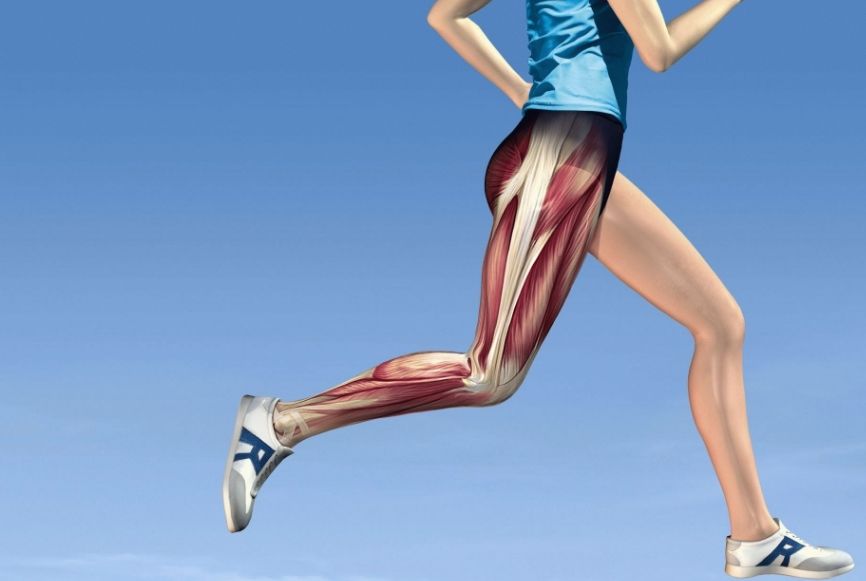The following rules should be observed to avoid re-injuring your ankle:
Causes, symptoms, first aid and treatment of a sprained ankle

The ankle joint, also known as the ankle joint, is a joint made up of the head of the fibula and the head of the tibia. Anatomically, this joint is very stable as it supports the entire skeleton when walking and running. Excessive physical activity, improper footwear, or age-related circumstances can cause an ankle sprain.
- The external sprain is characterized by the fact that the injury is located at the mouth of the joint capsule on the fibula,
- internal is associated with a dislocation of the tibial apparatus,
- complete when the articular surfaces separate completely,
- incomplete with partial separation of faces.
Main causes of injuries.

Injuries mainly result from excessive exercise without preparation. Rubbing, walking in uncomfortable shoes, and falling are common causes of ankle injuries. Musculoskeletal disorders can also be a cause. In winter, ie when there is ice, the injuries are particularly pronounced. Then there can be injuries to the knee as well as injuries to the ankle. For this reason, it is useful to know the main symptoms of a dislocated knee joint, which are described in another article. This information will help you suspect an injury and seek help.
- Acute pain sensations in the ankle area when moving,
- There is swelling and possible hematoma. The swelling is caused by increased vascular permeability and inflammation,
- a misalignment of the joint. When the talus is dislocated, the talus bone protrudes from under the skin and is easily felt at the ankle. In a subtalar dislocation, the heel bone protrudes on the inside of the ankle.
- At the time of the dislocation itself, a clear crack can be heard,
- Limited range of motion due to pain syndrome. The emergence of pain is associated with the presence of swelling or a hematoma that squeezes the nerve endings.
There are three degrees of ankle dislocation:
- The mild or first stage is characterized by severe stretching of the ligaments of the ankle. The pain sensations are small. The function of the ankle is essentially intact. Usually no treatment is required and the pain resolves spontaneously within a week.
- The second or intermediate degree is characterized by a more pronounced pain syndrome. It is generally treated with painkillers. At this stage, tearing of the lateral or medial ligaments occurs. Swelling occurs and the function of the joint is impaired. This injury needs treatment.
- The ankle ligaments were torn in a serious injury. There is severe, acute pain and possible bruising. The function is severely restricted. There is severe swelling.
Does ovulation happen every month?
Normally, a woman can have several cycles a year without ovulating. The number of cycles without ovulation increases with age, so from the age of 30-35 the chances of conception decrease rapidly. If a woman is in her 40s, conception is possible, but the answer to the question 'how long before ovulation' is probably 'several months'. During menopause, women stop ovulating at all.
The menstrual cycle lasts 28-32 days on average. It is impossible to know exactly when a woman is ovulating without special tests. Ovulation usually occurs in the middle of the menstrual cycle (day 12-15). For more accurate calculations, you should record your basal body temperature over several months. Another way to find out the time of ovulation is a calendar. To find out when you will ovulate after your period, you need to count 14 days from the start of your last period on the calendar. In an ideal 28-day cycle, there are 14 days until the next period, so ovulation occurs in the middle of the cycle. But does ovulation always occur on day 14?
Doctors say that the ideal classic version is not very common. Most women ovulate between the 11th and 21st day of their cycle, counting from the first day of their last period. The duration of ovulation depends on hormones, emotional and physical conditions and can occur on different days in different cycles. Doctors are also aware of cases when a woman ovulated twice during the same menstrual cycle.
How many days does it take to ovulate?
Ovulation is a short phase of the menstrual cycle that lasts only 48 hours. During this time, the fertilizable egg leaves the ovary, travels down the fallopian tube, and enters the uterus, where it awaits fertilization. If fertilization occurs, the egg implants itself in the wall of the uterus.
The two to three days before ovulation and one day after ovulation are considered favorable days for pregnancy, and the chances of conception are particularly high on the day of ovulation. So it's important to keep an ovulation calendar and know how long ago you ovulated so you can calculate your lucky days. Read more about this topic here.
A mature egg cell is only viable for 24 hours, so the so-called safe days only occur the day after ovulation. The chance of getting pregnant after ovulation is extremely small.
- Why the shoes fall off in an accident.
- This is what a dislocated leg looks like.
- Which legs are considered long in women?.
- Salon orthopedic orthopraim reviews.
- Which human leg is shorter?.
- Child with Komarovsky clubfoot.
- Orthopedic shoes for different leg lengths.
- How do you tell if it's an ankle fracture or a dislocation?.
